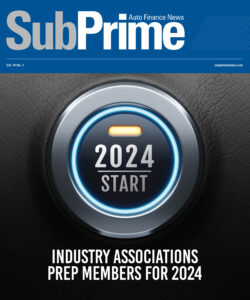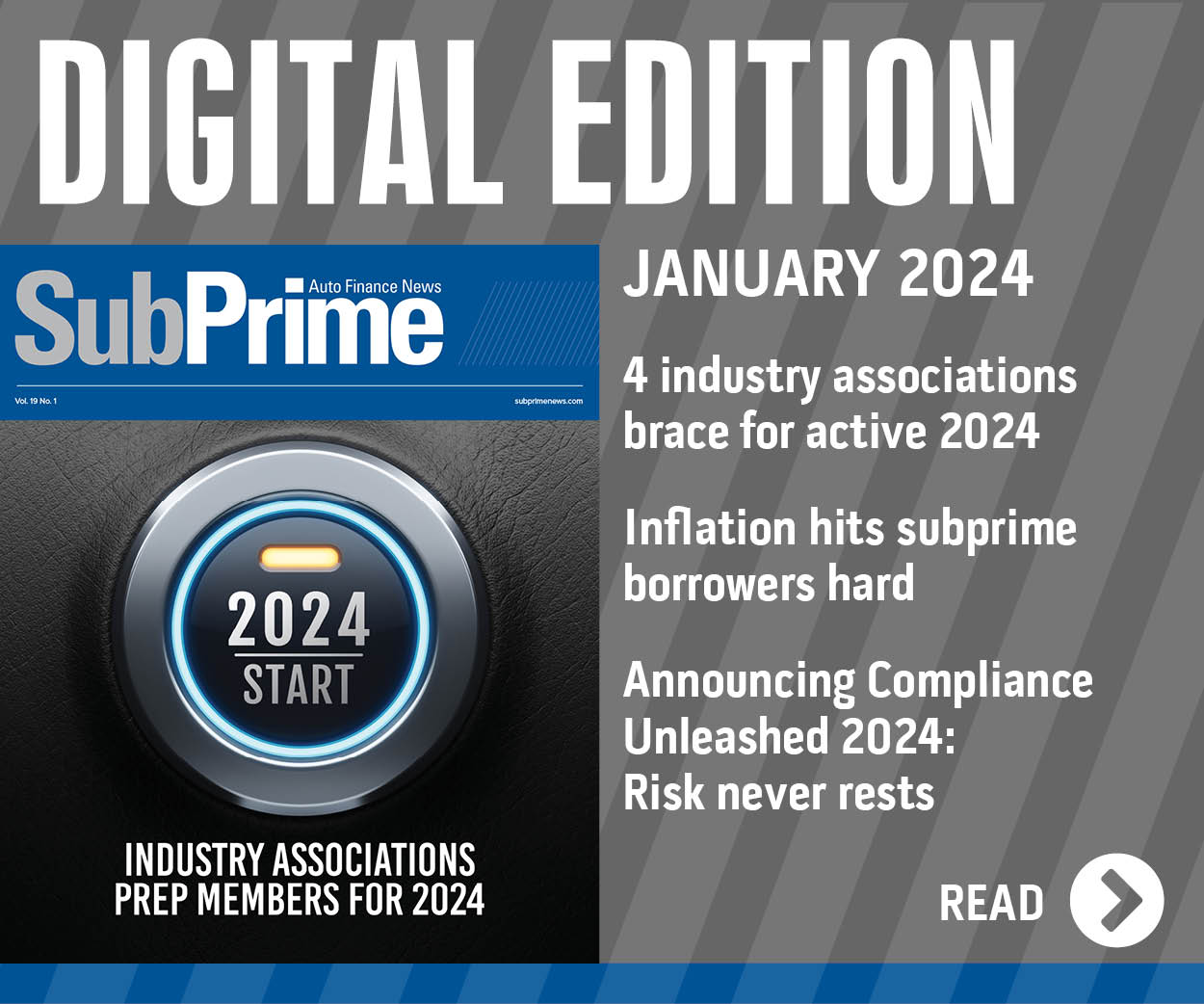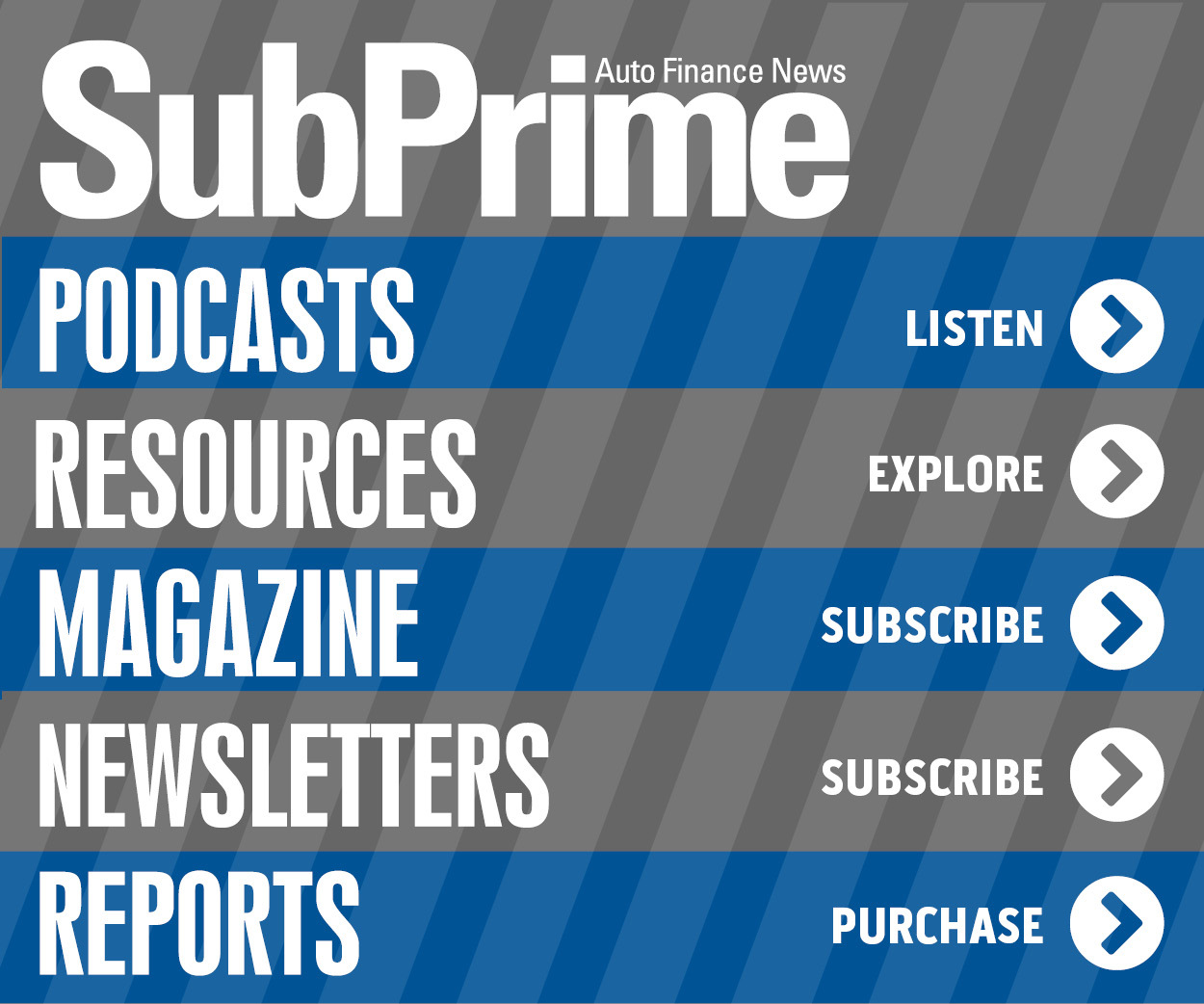Chase’s Subprime Exec. Discusses Expansion
GARDEN CITY, N.Y. — Shortly after the merger of Bank One and Chase in 2004, Chase realized there was a strong growth potential in the subprime auto lending market and soon focused on expanding these services for dealers. Since then, Chase Auto Finance has opened 10 new regional prime/nonprime business centers and said it's planning to open eight more by the end of 2007.
"Our predecessor, Bank One Auto Finance, began operating a custom finance group in Tucson and Phoenix, Ariz., in the early 1990s," explained Bill Jensen, national subprime executive for Chase Auto Finance. "As Bank One Auto expanded, the custom business grew until a subprime product was available in 22 markets throughout the Midwest and Southwest.
"Although volume was small, the performance was excellent because of a consistent, disciplined approach using basic credit and collections strategies," he continued. "Its growth was minimal because it was managed as a niche product rather than a line of business for several years."
However, once Bank One merged with Chase, instead of subprime remaining a niche product, Jensen said executives quickly realized the high demand for such services and how the expansion of these offerings could play a role in the full-spectrum credit strategy being developed by the financial institution.
"Technology, risk management, sales and service have evolved, modernized and improved significantly, but the same basic subprime credit and collection strategies are still in place," Jensen said. "Our growth strategy involves market expansion by opening new offices. We've added 10 since 2004 and plan another eight openings by the end of 2007. We're also increasing the number of underwriters and sales personnel in our existing offices to provide better service to our dealer customers."
Given the complexity and risk involved in subprime lending, Jensen said the primary goal of the expansion is to enhance Chase's local presence to better understand the trends and demands in each regional market.
"First, there are simply a lot of good markets in which we do not have an established local presence today," Jensen explained. "When we started to expand, we were in 22 markets. Now we are in 32 and will be in 34 by year-end and 40 by the end of 2007.
"We recognize the need to know the market, the dealers, the customers and the economic influences of various markets," he continued. "Chase Custom needs to expand so we can grow and compete with other major subprime competitors."
To efficiently serve each dealer's needs and offer a full spectrum of Chase products, Jensen said a regional presence can prove vital.
"The most recent office openings have been in Riverside, Calif., Los Angeles and Minneapolis," he commented. "We do serve every state today, but know we can do an even better job by being more local. We don't have a final end number or specific time frame in mind (for the expansion); the market and market conditions and our overall success will dictate that, as well as our ability to promote and attract talent to staff the expansion."
In order to keep its subprime auto lending successful, Jensen said Chase Auto Finance needs to stick to its business model and continue attracting experienced underwriters and collectors who will work with dealers to get strong results.
"Like most subprime specialists, Chase Custom identifies key attributes within each transaction that we believe will lead to positive results," Jensen said. "Combined with ever-evolving scoring and performance models more specific to subprime, this approach helps us manage the business.
"We also depend on execution, which means experienced underwriters and collectors working consistently with our dealers and consumers to create the best result we can with every loan request we review and every booked loan we collect," he added.
Jensen went on to say that Chase is realizing its goal of being able to offer any level of credit service that dealers need, including high-prime, near-prime and subprime, in addition to floor planning and real-estate investments.
"More than 200 Chase Auto Finance dealer relationship managers call on dealers throughout the country every day," he highlighted. "Chase Auto Finance has a great team of employees who work hard each day to provide the best service possible for the auto industry.
"We are very proud of our captive finance relationship with Subaru of America, and we have established relationships with almost all of the major public dealer groups in business today," Jensen pointed out. "Chase is the No. 1 non-captive market share bank in the auto business and No. 1 in non-captive dealer commercial services as well. Chase Auto Finance serves more than 15,000 dealer relationships in all 50 states. Our goal is to improve on those numbers."
As Chase opened prime/nonprime business centers over the last few weeks, Joe Scimone, president of prime auto for Chase, pointed out that one of the auto division's primary goals is to strengthen its commitment to dealers.
"Car buyers span the credit spectrum, so we are making even more convenient for auto dealers in the region to meet their customers' diverse needs," he said.
Editor's Note: For more hard news and executive insights about the subprime auto finance market, please see the first edition of SubPrime Auto Finance News, which will be published in early October. Also, keep an eye out for SubPrime Update, the companion e-newsletter to SubPrime Auto Finance News, which will be launched soon. To offer article suggestions or get advertising information for the new publication, please call (800) 608-7500.

 View The Latest Edition
View The Latest Edition

